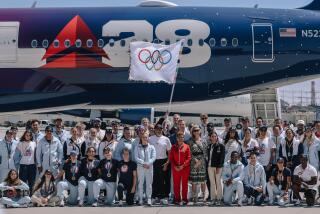Some Healthy Competition Will Mean Fresh Air
I have a number of vivid memories of growing up in Los Angeles in the 1960s. One of them is of the smog. After playing outside on a summer afternoon, I would often find myself short of breath. I did not have asthma or any other respiratory disorder. It was just from the poor air quality.
Air quality in the L.A. area is much better now than it was then. It is a testimony to the smog-reducing technology that our air is better even though we have lots more people and cars than we did then. But anyone in San Bernardino can tell you that the war on smog is far from won.
So what do we do?
Prior to my service in the Legislature, I was the owner of Saturn dealerships in Orange County. I was given the charge by General Motors back in 1995 to lead the effort to sell the zero-emission EV1 electric car in this region. We tried very hard. I drove an EV1 as my primary car for nearly two years.
I spent countless hours speaking, strategizing, marketing and promoting the EV1 and electric cars in general. In the end, we sold fewer than 100 of them in Orange County, and the project was scrapped. It failed because the technology was not ready for the market and the market was more interested in CD players and sunroofs than low emissions.
So do we just give up? Absolutely not.
Confucius once said that our greatest glory is not in never failing, but in rising every time we fall.
President Bush recently proposed that the federal government spend $1.7 billion over the next five years for research on today’s most promising zero-emissions technology, the fuel cell. Fuel cells generate their own electricity on board from hydrogen, and the only thing coming out of the tailpipe is water vapor. Is this the answer for the future or another electric car false start? No one knows for sure. That is why it is important to pursue other technologies concurrently and not put all of resources into one technology.
BMW is working not only on fuel cells, but also on regular internal combustion engines fueled by hydrogen. General Motors is working on bringing hydrogen fuel cell cars to market by the end of the decade. Another major manufacturer believes in fuel cells but thinks that they should be gasoline-fueled because the infrastructure already exists. And in the interim, many manufacturers will be bringing out gasoline-electric hybrids, engines that shut down cylinders when they are not in use and ethanol-fueled cars.
So we need to advance the cause of cleaner air and cleaner cars. What should government do?
Well, what government should not do is mandate a technology or otherwise pick a technological winner. That’s part of what caused the electric car failure. Technological breakthroughs may come from a currently unforeseen place while what otherwise appeared feasible encounters a roadblock.
Government should do three things:
* Create incentives and reward outcomes and results rather than mandating technology. That way the different approaches, technologies and fuels can compete to see which is best.
* Start to develop infrastructure to create and distribute alternative fuels to gasoline. Abundantly available hydrogen seems to be that alternative. But whether it’s hydrogen or something else, we need to begin now to prepare for the day relatively soon when not all cars fill up with gasoline.
* Begin the process of getting the public engaged in caring about low- and no-emissions vehicles. Air bags are showing up in cars in places the government never expected or mandated. Car companies are doing that because the public is interested in and demands safety. We should begin down the road of making it cool to have a low-emissions car so that the public demands that too.
I have in the past and will in the future introduce bills dealing with one of these three areas. This year, I have introduced AB 927, which would establish state guidelines for hydrogen production and delivery so that fueling stations that want to deliver hydrogen can have streamlined regulations and know exactly what to do.
Imagine a day when the San Gabriel Mountains are as clear in August as they are on a January day right after a rain. Is this important? After all, it is all about the air we breathe. Not too much is more important than that.
More to Read
Inside the business of entertainment
The Wide Shot brings you news, analysis and insights on everything from streaming wars to production — and what it all means for the future.
You may occasionally receive promotional content from the Los Angeles Times.










